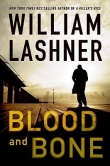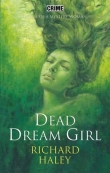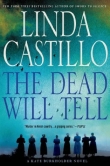
Текст книги "Swains Lock"
Автор книги: Edward A. Stabler
Жанры:
Триллеры
,сообщить о нарушении
Текущая страница: 21 (всего у книги 25 страниц)
Chapter 34
Sharpsburg
Thursday, September 5, 1996
Approaching the colonial-era city of Frederick, Maryland, Vin checked the rear-view mirror again. He half expected to see a charcoal-gray sedan with tinted glass. At first it had looked familiar, but he hadn’t been able to place it. Even in upscale Potomac, the gray Audi wasn’t the kind of car you saw everyday. And now he’d seen it three times in the last three days. Parked on Ridge Line Court when he and Nicky had returned home from Cool Aid early Monday afternoon. On the opposite side of the street on Tuesday at sunset, a bit further from the house. And again on Wednesday during his late-afternoon run. The car had been parked in the dirt lot at Pennyfield Lock, a stone’s throw from the route he and Randy traveled to the towpath.
When he saw the exit sign for Route 70, he suddenly remembered where he’d seen the car before. In his driveway, last fall. It was Kelsey Ainge’s car. He glanced in the rear-view mirror as he changed lanes and slowed for the exit. No gray Audi. He shook his head, surprised he hadn’t made the connection earlier. Before he fell on his hip in the woods and got sick, he’d had the sense that she was shadowing him. Or maybe just steering him around. From Carderock and the joke of the joined sycamores to the toy crosses on top of the Bear Island stop-gate. As if she were guiding and mocking his search for Lee Fisher’s truth at the same time.
And now he remembered something he’d seen over the weekend at Cool Aid. The farm where the party took place was bordered to the south by a bend in the shallow Gunpowder River and to the southeast by a railway line that had been converted to a dirt-and-limestone trail. The trail was carried over the river by an old railroad bridge. Bikers and runners often stopped on the bridge to peer out over a strip of woods at the sprawling lawn between the river and the rolling hills on the northern edge of the farm. On Cool Aid weekend a necklace of two hundred tents dotted the periphery of the lawn, surrounding a central music stage, a white-canopied food tent, a refrigerated beer truck, and a pond with a white-sand beach. Vin and Nicky had joined friends from New Jersey and hundreds of other guests on Saturday and Sunday in a low-impact pentathlon of lounging, wading, listening to music, eating, and drinking.
The shin-high grass of the Cool-Aid parking area was only a few hundred yards from the rail-trail, and when he ambled back to the car for one reason or another, Vin liked to scout the trail users watching from the bridge. Late Saturday afternoon, he’d noticed a slim woman with honey-colored hair standing on the bridge with her elbows propped on the iron railing. From a distance it didn’t look like she was dressed for biking or running; her lavender top had a button-down front and long sleeves that she’d pushed up her forearms. She was watching Cool Aid through pocket-sized binoculars. Sensing there was something different about her, Vin had stopped to gaze up and out at the bridge. And as soon as he did that, she lowered her binoculars and turned away. He watched her deliberately cross the rest of the bridge and disappear behind the trees. Later he’d used his camera’s zoom lens to study the bridge from further away. She was back, with her elbows on the railing and eyes behind binoculars, watching. He couldn’t see her face clearly, but something about her looked familiar.
Trying to visualize the woman on the bridge again, he almost missed the exit for Route 40. A glance confirmed that there was still no gray sedan behind him as he swung west on the Old National Road. The woman watching from the bridge on Sunday and then the parked car on Monday and Tuesday – by themselves those sightings were hardly worth notice or reflection. But now he felt compelled to reconsider them in the context of Wednesday afternoon.
Yesterday afternoon he and Randy had run down the wooded hillside and out into the meadow next to the old Pennyfield House, then crossed over the lock and turned upstream, as they usually did. A quarter-mile past Pennyfield, the towpath bisected the Dierssen Waterfowl Sanctuary. To their right a backwater eddy extended into the flat, swampy woods of the berm. On the left a string of shallow ponds choked with marsh plants stretched for half a mile, occupying most of the terrain between the towpath and the river. Dierssen offered stilted boxes for wood ducks and also attracted herons, songbirds, beavers, and foxes. On its downstream side, a dirt trail used by birdwatchers branched off toward the river and circled the ponds.
Randy was lagging as Vin approached the branching trail. His sniffing completed, Randy sprinted to catch up. Vin saw the dog’s ears flex as it passed him. Randy skidded to a stop, stood alert for a moment, and then bolted along the trail toward the river. Vin jogged in place and waited. Randy couldn’t resist pursuing a deer or fox, or even a goose or heron, but Vin knew the animals could escape by taking to the air or water, or by outrunning or outwitting his dog. Randy’s chases were brief and typically ended with his return to the towpath winded and muddy.
Wednesday’s pursuit lasted only a few minutes. Randy was panting when he trotted back, but he hardly seemed tired and wasn’t muddy at all. Whatever creature he’d heard or scented must have escaped before luring the dog far off the trail. As he usually did after bolting without permission, Randy stood directly in front of Vin, wagging his tail. Vin was never sure whether the dog’s motive was to ingratiate himself or to tell Vin about his encounter with the one that got away. While noting the surprising lack of burrs or mud on Randy’s legs, he saw that a piece of paper, rolled into a tube about the size of a cigar, had been slipped under his collar and pinned against the back of his neck.
He pulled the paper out – the collar seemed tighter than usual. Twisting it, he saw the exposed black line on the nylon band; someone had tightened it a notch, probably to keep the paper tube in place. A current of anger shot through him as he envisioned a stranger handling his dog in the woods. Whoever it was, Randy must have judged the person approachable. He grudgingly conceded that letting Randy run free put the dog, the stranger, and himself at risk. After resetting the collar, he unrolled the paper cylinder, wondering what message awaited. Maybe it was a miniature menu for Chinese take-out or a pizza delivery service.
There was only one word on the paper, written vertically inside the post of a cross. “SOON.” Or since the Os flanked the cross arm, maybe it meant “SO ON.” The cross mimicked one he had found planted in the mossy dirt atop the Bear Island stop-lock last March.
“Fucking bullshit,” he mumbled in irritation, blood-pressure rising. He stashed the paper in his pocket and launched back into his run, too irritated to bother leashing his dog. Randy instantly passed him. “Soon,” he muttered, back into the rhythm of running. “Screw that.”
***
He continued west on Route 40 through fields of tall corn and undulating meadows that rose to tree-covered hilltops. The old road climbed the green slope of South Mountain to Fox Gap, and then wound down the west side of the hill into Washington County. In the town of Boonsboro, he waited at the Main Street light to turn southwest toward Sharpsburg. He checked the rear-view mirror once more – by now it was a reflex. No gray sedan.
The rolled-up paper with the cross was a link between his current suspicions and his mishaps at Carderock and Bear Island earlier in the year. What reminded him today about the events of the winter and spring was the rekindling of an intuition that he was being guided or stalked. And the threads he was able to connect all pointed to Kelsey Ainge.
The road ran through rolling fields and the village of Keedysville before crossing Antietam Creek on a stone bridge and then climbing a steady grade toward Sharpsburg, following the trail traveled by thousands of Union Army soldiers on the bloodiest day of the Civil War. A line of iron plaques along the road, painted black, commemorated the movements of various divisions on September 17, 1862. Beyond the plaques, green fields rose and fell on both sides, stretching into the distance like ocean swells. The interlaced rails of graying snake-fence segments scarred the fields with zigzagging lines of stitches – maybe one rail for each of 23,000 casualties here, he thought. The road leveled off as it entered Sharpsburg.
Houses with painted clapboard siding and double-hung windows pressed against the sidewalks of Main Street. Between the first and second stories, narrow portico roofs reached toward the street, supported by painted columns and shading shallow front porches. Downtown Sharpsburg was only four blocks square and Betsy Reed lived near its center, on Chapline Street.
Vin coasted down Main Street, reading the intersection signs. He was early so he turned onto Snyder’s Landing Road, which sliced through cornfields and wound down through woods to the Potomac River. Just before the road's terminus at a boat ramp, a wooden bridge spanned a broad ditch thick with undergrowth and trees. A sign confirmed what he already knew – this drained and abandoned artery was the C&O Canal, on the five-mile level of Sharpsburg above Lock 39. He drove a dirt-and-gravel spur alongside the canal until he noticed a cloud of dust in his wake, then reversed course and headed back to town.
At 117 Chapline, Betsy was knitting on her porch swing when he parked and crossed the street on foot, carrying a folding notepad. The clapboard house was painted a warm tan color that had been softened and dulled by the sun. He rapped his knuckles against a column to get her attention and smiled when she looked up from her knitting.
“Mrs. Reed?” She peered at him over her glasses and smiled back. “I’m Vin Illick. We spoke on the phone about…”
“Yes, of course,” she said, putting her knitting aside. “Hello.” She stood up and brushed the wrinkles from her slacks and patterned blouse, then pushed the octagonal frames back against her face to see him better. Her hair was swept away from her forehead and curled neatly behind her ears, its color somewhere between sand and gray. She looks closer to seventy than sixty, Vin thought, noticing the sagging skin on her cheeks and neck. But still petite, with a firm grip to her weathered hand. Aside from a hint of garnet on her lips, she didn’t seem to be wearing makeup.
“Please call me Betsy,” she said in the warm, fragile voice he’d heard on the phone. “Let’s go inside where we can sit. I’m afraid there’s not much room out here.”
He held the screen door open and followed her through. The entryway opened directly into the unlit living room, where a couch with faded upholstery sat against the far wall, framed by end tables and windows with blinds angled to let the sunlight in. Two colorless stuffed armchairs with draped lace doilies faced the couch across a central coffee table. The still air smelled like rarely-used furniture.
Betsy switched on the end-table lamps and offered Vin an armchair. As he eyed two stacks of leather-bound albums at the center of the coffee table, she retreated to the kitchen to pour lemonade, then returned with filled glasses and took the chair beside him. “I told my daughter you were visiting this afternoon,” she said. “And that you were writing an article about the canal days, so you wanted to know about Grandpa Em. Alison helped me get Dan’s albums out and we looked through them with the girls before they left.
“Of course, most of the photos are of Dan and me when we were younger, and of Alison, Tom, and Linda growing up.” She sat back and turned toward Vin with a half-smile. “It’s always funny to see children who can’t sit still for five seconds spend an hour looking at old pictures of their parents.”
Vin smiled back. “I enjoyed doing that as a kid.”
She pointed to the stack of three albums to his right, which looked newer than the others. “Those are mostly snapshots of our children. Alison was born in ’57, so that’s about as far back as those books go.”
Vin shifted in his chair. “I think it’s great that you and your husband found time to collect all your photos in albums. No one in my family was ever organized enough to do that. Most of ours are stuffed inside envelopes and buried in drawers.”
“Well, that was something Dan liked to do.” She pointed to the other albums, a black one on top of a brown one, both discolored and scratched. “Those two are older. Most of those photos came from Dan’s father, Jake. So there are pictures of Dan and Sarah as children, back in the thirties, and then some that came later. After Jake gave Dan and Sarah their first cameras, he didn’t take many pictures anymore. I guess that was his way of passing the torch.”
Vin listened with his eyes on Betsy while trying to unobtrusively settle his notebook in his lap and open the cover. She seemed to be relaxing into her chair and warming to the conversation. There was something about her, a straightforwardness that he first noticed when they spoke on the phone. He found it refreshing and didn’t recognize it right away. Sincerity – and an utter lack of pretense. Was that something that came with age, or was it something she carried forward from a different era?
“I think you told me that Emmert Reed was Jake’s father?”
“That’s right,” Betsy said. “Grandpa Em was Jake’s father and Dan’s grandfather.” She gestured to the albums again. “There’s a picture of Em and his family in that bottom album, back in 1909. The girls and I were surprised to find that there. It must have come from a box of Jake’s things that Ida gave Dan. We could only find a few pictures of him.”
“Ida was Jake’s wife?”
“That’s right. Ida lived to be eighty-seven. She died just three years before Dan.”
Vin sipped his lemonade and extracted his pen from the notebook. He sketched a rough family tree, with “Emmert + ” at the top and “Jake + Ida” on the next rung. On the rung below their names he wrote “Dan + Betsy.”
“What was Emmert’s wife’s name?”
“Helen.” He wrote “Helen” to the right of Emmert’s name.
“And you mentioned that your husband used to visit his grandfather when he was young, and Emmert would tell him stories about the canal days?”
Betsy nodded. “Mostly about how hard it was to run a canal boat. But how it was rewarding, too, since you were your own boss. You could run all night if you had the motivation. And there was always something to see or do along the canal.” She paused to look at Vin, who nodded reassuringly. “Dan used to pass that sermon along to our children. He wanted them to see the value of hard work. Of course, I suspect old Emmert maybe wasn’t quite the role model Dan made him out to be.”
“Do you mean after he gave up boating?”
“Probably both before and after,” she said. “Dan’s father used to say that Grandpa Em knew how to entertain himself in Georgetown. So some people called him M-Street. And then when he started tending lock down near Leesburg – was that at Edwards Ferry? I’m not sure – he had a good business selling barbecue. And maybe he sold a little whiskey as well. But that was Prohibition times, so lots of people were shaving the edges off the law.”
Vin thought about how to phrase his next question. “I know – from my research – that Emmert was quite familiar with Georgetown, and really with the whole canal, from captaining a boat. And then after 1913, he lived at Lock 25 at Edwards Ferry for about ten years during boating seasons. Is there any other location along the canal that you associate with him? Some other place he liked to spend time?”
Betsy stared at her folded hands before shaking her head. “No,” she said tentatively, looking up at Vin. “I don’t think so. Grandpa Em lived here in Sharpsburg when he retired from the canal. He had a house a couple miles from here on Harpers Ferry Road where they raised their children. Jake used to take Dan and Sarah over there for barbecue back in the thirties, though times were hard and sometimes they couldn’t afford meat. Emmert and Helen lived there until Emmert died. A few years later Jake and Howard helped her fix it up and sell it, and then Helen moved in with Alice until she died.”
“Alice?”
“Alice was Dan’s aunt. Jake’s younger sister. And Jake had an older brother Howard.”
Vin wrote the names down on his tree to the left of Jake’s. “And Emmert’s old house on Harper’s Ferry Road…that’s not near the river, is it?”
Betsy shook her head. “Well, the river bends around a lot here. I suppose the house was two or three miles away. The man who bought it knocked it down and built two new houses.”
She fell silent again, her gaze fixed on a point beyond the window. Maybe she was visualizing Grandpa Em’s old house. Vin glanced at the crow’s feet around her eye and tapped his pen on the paper but wrote nothing. He felt as if there was something he should be able to learn about Emmert Reed from Betsy, but the insight danced out of reach. She was Emmert’s grandson’s widow, and she couldn’t help him solve the puzzle by identifying the place that was well known by Emmert’s albino mule. Her memories could only offer a basic sketch of Grandpa Em. He glanced back at the albums on the table. Maybe seeing the photos again would trigger something more. “Would it be alright for me to see the pictures of Emmert?”
“That would be fine,” Betsy said, pulling out of her reverie. She centered the brown album between them on the table, then turned the cover and flipped to the first page of photos. Vin saw black-and-white shots of a young woman with a boy and a girl sitting at a picnic table eating a meal. In the background were the thick trunks of tall trees. Betsy pointed to the boy.
“That’s Dan, with his Mom and Sarah. On a trip they took to Yosemite, around 1940.” She flipped the page and then leafed through several more. “This was Jake’s album, so these are all his pictures. Dan left them in the order Jake had them. Then at the end of the book he added some of the other photos that Jake kept loose in a box.”
She flipped to the end of the book and turned pages backward, stopping on a left-hand page with a single photo. She laid the album flat and pulled back her hands so Vin could see it. The image showed a man sitting on a straight-backed wooden chair in front of a whitewashed stone wall. He wore a grayish Stetson and an unbuttoned vest over a white shirt and held a pipe in one hand while resting his ankle on his knee. The corners of his closed mouth were turned up and his dark eyes sparkled. His thick gray mustache and trim beard reminded Vin of a popular photo of Ernest Hemingway. Written in black ink in a loose hand below the photo was the caption, “Grandpa Em, 1921.”
“That’s Emmert. I think that was taken down at his lockhouse.”
Vin stared at the image. There was something mesmerizing about Emmert’s playful eyes and elusive smile. What secret are you holding from me, he wondered. What does your mule know that I don’t? He became aware that Betsy was looking at him, waiting for a signal to turn the page. He raised his eyes from the image.
“There are a few earlier pictures,” she said. Vin nodded and she flipped the page backward, then pointed to the left-hand photos. “Those are from Jake’s fiftieth birthday party. After that, he left the picture-taking to Dan and Sarah.”
She swung her finger to the opposite page. “These are the other pictures of Emmert. Well, except the one on the bottom, which Emmert took of the boys.” The uppermost photo showed a man wearing a flat cap and a light-colored shirt unbuttoned at the neck. His mustache was dark and luxuriant as he leaned against the transom of a broad boat with his hand on the long wooden tiller. Vin recognized the impish eyes of a younger Emmert Reed. The caption below the photo read, “Cpt Emmert Reed, Boat 32, 1905.”
“That’s Emmert on his boat. And that next photo is a family portrait.”
Vin turned to the second picture. Emmert and a young woman in a jacket, skirt, and wide-brimmed straw hat were seated at opposite ends of a short bench out on a lawn. Between them were two boys about seven or eight years old, dressed neatly in white shirts and dark shorts, and a younger girl in a simple dress leaning against her mother. The caption read, “Emmert, Howard, Jake, Alice, Helen” and “July 4, 1909.”
“That’s the whole family,” Betsy said. “Howard ended up going off to war and moved to Baltimore when he came back.”
Vin studied the image. No one was smiling, because you didn’t smile when you had your portrait made in that era. But Emmert still seemed to be radiating a rakish self-confidence. Maybe it was the mustache.
He proceeded to the third photo and his heart leapt into his throat. Emmert Reed wasn’t in it, just two boys, each perched bareback atop a horse. But the large ears were a giveaway that the boys were riding mules, not horses, and the mule on the left was entirely white. Emmert Reed’s albino mule! He devoured the caption: “Howard and Gladys, Jake and Annie, 1913.”
“That’s Jake on the right. Howard was a year older, so he usually got to ride Gladys. I think she was a bit of a celebrity, being albino. Jake said she was kind of spoiled.”
Vin tried to sound dispassionate. “Did he say anything else about Gladys?”
She regarded him quizzically. “Not that I recall. I know she was part of Grandpa Em’s team for a few years, but I don’t remember hearing anything else that was special about her. Apart from her color.”
He sighed and looked back down at the album, reviewing the photos from the bottom up. Howard and Jake astride their father’s mules. Emmert in his prime, posing with Helen and the kids for a family portrait. And Emmert as a young man, during one of his first seasons captaining a canal boat. It was frustrating to come this close – but no closer – to the man who could explain part of Lee Fisher’s message to Charlie Pennyfield. He had been able to construct the framework of an answer but was missing a plank that he needed to tie it all together.
After turning back for another look at Emmert as an older man, he tried not to let his disappointment show as he tied up the obvious loose ends with Betsy. Jake’s siblings Howard and Alice had been dead for years. Dan’s older sister Sarah was still alive but suffering from Alzheimer’s at a nursing home. Betsy knew of other families – the Moses, Colberts, Snyders – that had lived in Sharpsburg for three or more generations, but she couldn’t say for sure which of them had been involved with the canal in the twenties.
He took a few notes as a gesture of good faith and closed his notebook, telling Betsy he had to leave for an appointment back in Washington. He said he appreciated her willingness to help his research by sharing her recollections and family photographs.
“You’re quite welcome,” she said. She led him to the door and they said their goodbyes. As he turned to leave, she added a wish. “I hope you find what you’re looking for.” He thanked her again, then turned to wave from the far side of Chapline Street, but she was already closing the door.
Feeling thwarted and hollow, he approached his car, noticing that the back tailgate and windshield were covered with dust. He remembered the cloud he had stirred up on his brief spin alongside the C&O at Snyder’s Landing. It was time to wash it anyway. As he passed the rear windshield, he saw that someone had drawn a symbol in the dust and he felt as if his core sinews had been plucked like guitar strings. It was Kelsey Ainge’s mason’s mark. He swiveled to pan his surroundings but saw no person or gray sedan. The street was so quiet he could almost hear his own heart thumping. He stood still while a grassfire burned at his hairline and pinpricks of sweat formed on his forehead. He swept his hair back with his hand and opened the car door.
On the drive home he took the longer, faster route. When he swung east onto Route 70 near Hagerstown, he turned on the radio and hit the scan button, tapping it to hold the channel when he heard a weather report.
Fran remains a category 3 hurricane with winds of 115 to 125 miles per hour. The storm is tracking northward at 15 miles per hour and is now centered about 75 miles south of Cape Fear, North Carolina. The National Hurricane Center is predicting that Fran will come ashore sometime this evening, and has issued a hurricane warning for the coastlines of South and North Carolina.
Sounds like most of the storm will miss us to the west, he thought. I wonder whether we’ll even get any rain. The worst of it will hit the Appalachians and then start washing down toward us. He tapped the scan button again and the plaintive whine of a bluegrass fiddle filled the air. The feeling of having been here before flooded his senses, and for a few disorienting seconds the green hills of Washington County felt like home.








